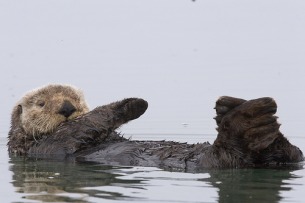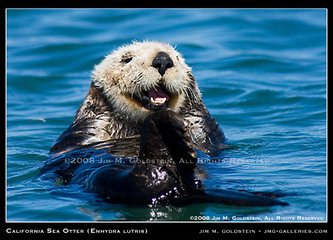Adaptation of a Sea Otter
The sea otter has made many adaptations to survive better in its habitat. First, the sea otter uses their feet to reduce or maximize heat loss when water temperatures are too hot or too cold. When the water temperatures are too cold sea otters reduce heat loss by floating on their backs with their feet out of the water. When the sea otter is trying to lose heat, they extend their feet out underwater to maximize their surface area. To preserve body heat sea otters tend to spread out or fold up their feet. Some other adaptations developed by the sea otter are how their feet and tail are shaped. Sea Otter’s tails are smaller than other otters to reduce surface area. The sea otter’s feet are webbed which are good for picking up speed in the water. When a sea otter swims their feet move faster than the rest of their body, concluding that they suffer more heat loss.
Fun Facts About Sea Otters
*There are 13 species of otters.
*Otters are believed to have been on earth for 30 million years
*Otters live on every continent except Antarctica and Australia.
*Sea Otters love to play around and even play games such as tag.
*Sea Otters unlike other otters capture food with their flexible fingers and grab food with their hands.
*The sea otter is the smallest marine mammal.
*The sea otter puts their food on their stomach to eat it.
*Otters are believed to have been on earth for 30 million years
*Otters live on every continent except Antarctica and Australia.
*Sea Otters love to play around and even play games such as tag.
*Sea Otters unlike other otters capture food with their flexible fingers and grab food with their hands.
*The sea otter is the smallest marine mammal.
*The sea otter puts their food on their stomach to eat it.




